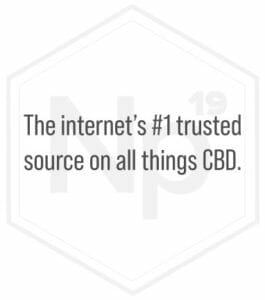WHAT IS CANNABINODIOL (CBND)?
The controversy on the usefulness of Cannabis as a plant has long been an issue. As much as there are benefits that can be derived from the plant, the question of whether to legalize it or not, is still a debate.
One of the characteristic of the plant is its psychoactive ability although there are non-psychoactive compounds that can be derived from it. One of such compounds is Cannabinodiol (CBND) also known as Cannabidinodiol.
Cannabinodiol (CBND) is one of the non-psychoactive Cannabinoid types of compound. It is a derivative of Cannabidiol though aromatized by a means of chemical reaction.
Like some other Cannabinoids, Cannabinodiol exists in low concentrates in Cannabis plant. This is why very little is known of it.
Related: Comparing CBN vs CBD
Cannabinodiol is said to be one of the few cannabinoids that is capable of affecting one’s mental state, that is, it is psychotropic in nature alongside tetrahydrocannabinol (THC), cannabinol and possibly tetrahydrocannabivarin.
It has, as its boiling point, (F), 927 ± 104, boiling point (C), 497 ± 40, Chemical Formula, C21H26O2 and IUPAC Name, 2-(5-methyl-2-prop-1-en-2-ylphenyl)-5-pentylbenzene-1,3-diol.
The first mention of these compounds appeared in 1972. Van Ginneken et al. named a compound isolated from hashish and identified by GC-MS cannabinodiol.
This assignment, however, was proven incorrect after the total synthesis of cannabino-diol (CBND-C5). The compound isolated by Van Ginneken et al. was determined to be cannabifuran (CBF-C5) and it was shown that the product from the photochemical conversion of cannabinol is cannabinodiol.
Therefore, all references in the literature vis-a`-vis CBND-type cannabinoids quoting Van Ginneken should be regarded with suspicion.
Of all the active ingredients of Cannabis, Cannabidiol (CBD) seems to be the second prevalent.
Being the precursor for Cannabinodiol, one of its strongest scientific effectiveness is its ability to treat some of the cruelest childhood epilepsy syndromes, such as Dravet syndrome and Lennox-Gastaut syndrome (LGS) as they naturally do not respond to non-seizure medications.
However, lasting side effects exist with its excessive use. The side effects include nausea, irritability, fatigue, increased level of blood, raised level of certain medications in the blood.
HOW DOES CBND WORK?
Cannabinodiol (CBND) being an aromatized version of Cannabidiol (CBD) usually does not have a direct interaction with the Cannabinoid receptors; rather, it stimulates the Endocannabinoids system in the human body to produce its own cannabinoids.
THERAPEUTIC BENEFITS
Only little is known of the pharmacological properties of Cannabinodiol.
Related: What is CBN?
However, research has shown with much evidence that the compound is capable of treating people with neuropsychiatric symptoms, namely, anxiety, neurotic complaint, apathy, mood disorder, hallucinations, delusions, behavioral and personality changes, delirium, and cognitive impairment (dementia).
INTERESTING FACTS
Cannabinodiol is a phytocannabinoid which can improve cognitive functions.

References
Bowdetal, A., Swann, D.A., Turnbull, J.H., 1975. Photochemical transformations of cannabinol. Journal of the Chemical Society, Chemical Communications 19, 797–798.
Lousberg, R.J.J.C., Bercht, C.A.L., Van Ooyen, R., Spronck, H.J.W., 1977. Cannabinodiol: conclusive identification and synthesis of a new cannabinoid from Cannabis sativa. Phytochemistry 16 (5), 595–597.
Van Ginneken, C.A.M., Vree, T.B., Breimer, D.D., Thijssen, H.W.H., Van Rossum, J.M., 1972. Cannabinodiol, a new hashish constituent, identified by gas chromatography–mass spectrometry. In: Frigerio, A. (Ed.), Proceedings of the International Symposium on Gas Chromatography Mass Spectrometry. Tamburini Editore, Isle of Elba, Milano, Italy, pp. 109–129.
Vree, T.B., Breimer, D.D., Van Ginneken, C.A.M., Van Rossum, J.M., 1972. Gas chromatography of cannabis constituents and their synthetic derivatives. Journal of Chromatography 74 (2), 209–224.
Back to List of Cannabinoids











